https://marco.org/2009/07/01/im-relieved-that-the-majority-of-technological
I’m relieved that the majority of technological advancement happened before I was born, as I can’t imagine having to use such basic equipment every day.
I’m Marco Arment: a programmer, writer, podcaster, geek, and coffee enthusiast.
https://marco.org/2009/07/01/im-relieved-that-the-majority-of-technological
I’m relieved that the majority of technological advancement happened before I was born, as I can’t imagine having to use such basic equipment every day.
https://marco.org/2009/07/01/my-answer-to-that-is-that-daring-fireball-is
My answer to that is that Daring Fireball is decidedly not free. It’s simply a question of who gets charged. Readers don’t, but sponsors and advertisers do. What makes it work so well (so far) is that this makes everyone happy. I’m earning a nice salary. Readers get to read my writing in exchange for a small portion of their attention which I direct toward ads. And sponsors and advertisers are happy to pay a fair price to reach an audience of good-looking, intelligent readers such as yourself. But there’s nothing free about it.
— John Gruber (via chrisbowler)
https://marco.org/2009/07/01/hey-guys-i-thought-my-photo-was-boring-so-i

Hey guys, I thought my photo was boring so I spruced it up a bit. Now it’s hip internet art!
What do you think? Will this earn me 1000 notes and a bunch of Flickr group invitations?
https://marco.org/2009/07/02/steve-rubel-interviewed-me-about-instapaper-today
Steve Rubel interviewed me about Instapaper today after an insightful discussion about Tumblr, publishing, and communities.
https://marco.org/2009/07/02/normally-id-take-the-extra-30-seconds-to-pixelate
![]()
Normally I’d take the extra 30 seconds to pixelate someone’s last name and personal email address, but I don’t think someone who would send this email to a stranger about a free web service will mind.
Most of the emails I get are very nice, but occasionally one slips through that makes me question what, exactly, convinced someone that writing and sending it would be productive.
(For whatever it’s worth, here are my browser stats from the month before I started displaying the not-supporting-IE message.)
https://marco.org/2009/07/02/gridlocked-rush-hour-is-a-quick-fun-iphone-game
Gridlocked: Rush Hour is a quick, fun iPhone game that David got me hooked on. It’s like a slightly faster version of Flight Control for car traffic.
The road slowly gets flooded with cars and you control the red-light state of the 6 intersections. Just tap each intersection and the light changes to the other direction. That’s it. If too many cars get backed up for too long, you lose. Easy, right?
My best score so far is 351 on Medium.
https://marco.org/2009/07/03/share-your-instapaper-favourites
Want more articles to read? Go here and enter your username, and browse others, so you can take advantage of the website’s (and Pro 2.0’s) new starred-folder sharing feature.
I had a thought last night that I wanted to wake up this morning and get rid of 75% of the ‘stuff’ that I own. […]
How do you start to get rid of these things?
Get some sort of external storage. The basement, a small rental storage unit, your parents’ place, or New Jersey. The less convenient it is to access, the better.
Put nearly everything you own there. Leave out only what you’d pack if you were going on a trip for 2 weeks.
From that point forward, remove only what you need, as you need it, from storage. You’ll almost never need to do this.
After a year, get rid of everything that’s still in storage.
https://marco.org/2009/07/03/this-is-a-window-air-conditioner-safely-mounted

This is a window air conditioner, safely mounted, with the window open above it.
You may not have known that this was possible. I sure didn’t — I just assumed that a window either had an air conditioner in it, or it could be opened, but not both. And this was very important as I tried to figure out how to cool my office, which only has one window.
I looked into “portable” air conditioners, which are enclosed in cases and sit on the floor inside, just venting outside with a big plastic hose. I even bought a top-rated one from the internet and immediately returned it (which, given its size, wasn’t easy). They have three main problems:
It was clear, after trying the ridiculous “portable” unit, that my office needed a real window unit. I had accepted that I’d probably need to just give up the only window in the room.
But it ends up that if you get professional installers*, and the air conditioner is reasonably small (this one’s 6,000 BTU), they can brace it against a bar that they install across the window frame instead of the window itself. My installers claimed that this is perfectly safe and just as sturdy as a window mount when done professionally.
The total cost, with installation, was only about $400, and this is one of the highest-quality, best-performing air conditioners of this size: the Friedrich CP06E10. (Ignore the homemade cardstock deflector that I’ve taped to the front. It turns out that it’s a bit too cold when it’s blowing directly on you constantly.)
* I used Expert Applicance Center in Brooklyn to install this, and a giant 14,700 BTU monster in the living room installed the usual way, since they were highly recommended by online reviews.
https://marco.org/2009/07/03/regarding-palins-rapid-departure
Nobody suddenly announces a resignation on the Friday evening before a holiday weekend if it’s a positive thing.
This isn’t a bid for the presidency. It’s a scandal.
As with her speech itself, the tell is that the decision was apparently so rushed and sudden that there was not enough time to come up with a plausible cover story or to get out the word about what it was.
It looks like a duck and quacks like a duck. Either Palin is resigning ahead of some titanic scandal (which should emerge in short order if it exists) or her resignation was triggered by an even more extreme mental instability than we’d previously suspected.
I think Josh Marshall at TPM nails it with this. My bet’s on the scandal option.
https://marco.org/2009/07/04/palins-resignation-on-july-3rd-guarantees-her-a
Palin’s resignation on July 3rd guarantees her a front page spot on basically every American newspaper on the most America-focused day of the year […]. She is playing on the emotions of her supporters and its a brilliant move. The x < 50% of the population that hates Barack Obama wants to get behind something, and right now she is it. This isn’t a scandal. This is her implicit 2012 announcement. It’s a wink to the republican base that absolutely adores her (Yes, New York and California: millions of people LOVE Sarah Palin). She’s playing on the emotions of her supporters who will be all about beating the secret-Muslim-deficit-spending-baby-killer on this Independence Day. […] If we don’t take this seriously, she can win. Do not brush this off.
— Less is Mohrer: Regarding Palin’s rapid departure.
Good points, and it’s pretty convenient for that effect. I think the real story is more likely to be elements of both: she’s being forced to resign because of a scandal, and she chose the most convenient nearby time to do so.
Her supporters are so rabid, paranoid-delusional, and selectively attentive that she just needed to appear somewhat positive on her departure to maintain their support throughout the scandal that’s probably about to become public. They’ll be reminded of her image in this positive light on a nationalist holiday, and that’s all the help they need to convince themselves that anyone who says anything bad about her in the coming weeks hates America and hates freedom and hates women and hates the troops and eats babies and kicks puppies and loves Osama bin Laden.
As a result, most of the mainstream media, especially the television “news” outlets, will be extremely, negligently soft on their reporting of any scandal that comes out of this, because if they imply anything bad about her, all of her loud, idiotic cult supporters will foam at the mouth and write letters and make angry phone calls and rally their idiotic friends and boycott the networks for a day until they forget why they were angry and get lulled back into their fat corn comas watching their sorry excuse for news on their plasma credit-card-debt TVs in their giant subprime McMansions that are surrounded by nothing but other giant subprime McMansions and are a convenient 45-minute highway drive in their “compact” SUVs to their bullshit jobs at the insurance or financial-services companies that we love so much these days.
Happy 4th of July!
https://marco.org/2009/07/05/the-crunchpad-how-different-would-the-world-be
Fusion Garage, the soon-to-be-subsidiary of TechCrunch that’s building the OS for the CrunchPad, has a comically ridiculous motto:
What if the browser could boot without an OS? How different would the world be?
I’ll try to answer this question.
Technically, they’re probably just bundling a minimal, fast-booting OS (with a fast-booting BIOS, presumably, that can quickly wake from sleep) with a browser as the only application. They’re most likely not writing their own kernel or basic frameworks, since they can just use GNU stuff and Linux. And they’re definitely not writing their own browser, because that would be insurmountable by such a small team (and really stupid). They talk about running Flash, so it’s almost definitely just a stripped-down Linux distribution with the minimum support required to run a GUI, a custom-chromed Firefox (or Konquerer?), and an on-screen keyboard. So the OS is there — it just hopefully gets out of your way and you don’t need to know about it.
It seems like the worst combination of two products:
Geeks think both products are awesome and will take over the world, but neither have come close. The CrunchPad is much more like a slate-tablet than a netbook, but without the software flexibility. It has the terrible hardware of netbooks with the impracticality of not having a keyboard. If you’re going to spend $300 on a small, limited computer that you’ll only ever use for web browsing, I don’t see why you’d get a CrunchPad instead of a netbook. (An iPod Touch would probably be a much better choice than either.)
The presumption that this will change the world, at least on the software side, seems predicated on an implied shortcoming of browsers requiring operating systems. I don’t see why this is a problem, nor do I see how this would solve such a problem even if it existed.
Back to the original question: How different will the world be if they actually release this thing?
Well, Michael Arrington will have less money and a handful of geeks will have a $300 slate-netbook that they use a few times before it gets tossed in their gadget pile because everything it does is better accomplished with something else.
That’s about it.
https://marco.org/2009/07/05/my-theory-is-that-the-things-that-you-own-that
My theory is that the things that you own that you’re not using or don’t need aren’t just a waste of money and space: they’re draining you of your energy. Every time you walk past that cookbook that you never opened, or that model airplane kit that you meant to assemble, or the oscilloscope that you haven’t turned on in a year, a little neural pattern fires that says “Someday I should..” or “I always meant to…” or “God, I really ought to take care of that.” Each of these tiny feelings of obligation or regret is almost imperceptible on its own, but their accumulation throughout the day is a burden that you may not even know you’re bearing until it’s gone.
— Nat Friedman (via azspot)
Some numbers:
Getting the iPhone exclusive could be the best thing that AT&T has ever done for their wireless business.
And what have they done with that great fortune so far?
Well, one thing they haven’t done is adequately expand their capacity. Cellular networks have been able to add major features (such as web browsing, conference calling, photo- and video-MMS, media streaming, and tethering) quickly in the past because an incredibly tiny percentage of people would ever figure out how to use them. The networks were hardly touched for anything except voice calls and SMS. Most people didn’t buy smartphones, and those who did rarely used anything beyond a regular phone’s data capabilities except email. They hardly even browsed the web because mobile browsers were so awful.
The iPhone has dramatically changed that. iPhone owners actually use the data network far more than owners of other devices because the functionality is finally accessible and pleasant to use, and many iPhone buyers have never owned another smartphone — they came straight from dumb flip-phones.
So while the iPhone has been a boon to AT&T — not only did they get a huge influx of customers, but iPhone users spend twice as much as AT&T’s average on their monthly bills — the additional network burden is significant. As soon as these trends became apparent to AT&T (easily within 2 months of the original iPhone’s 2007 release), they should have scrambled to expand their data-network capacity.
Instead, they sat on their asses and enjoyed the extra profits. AT&T has always been a “cherry-picking” network, building out coverage and upgrading speeds only when absolutely forced by competitors, and then only doing the bare minimum and only serving the most profitable areas.
Their mistake was in the assumption that AT&T was getting a bunch of new, loyal customers. In reality, iPhone owners are loyal only to the iPhone. The carrier is just a required utility given a few pixels in the corner to show their name. That’s it. We’re as loyal to AT&T as we are to our electric company.
The same passion that drove all of these customers to abandon the excellent Verizon network for this awesome device is also pushing them to demand more functionality and more bandwidth. iPhone users pay twice as much as flip-phone users, but AT&T can’t just pocket the difference — we have high data needs that we expect to be served for that additional money.
And now, the network is so strained and AT&T is so slow-moving that they’re holding Apple back, cramping the iPhone’s growth, and leaving them vulnerable to competing devices on better networks.
AT&T was given a great fortune with the iPhone exclusive, but they’ve completely failed to do anything to hold onto it. As soon as there’s a better option, they’ll lose a big portion of iPhone users who feel no loyalty to them because they’ve done absolutely nothing to deserve any.
There’s an interesting dynamic between the U.S. cellular carriers, Apple, and Palm if you pay attention and read between the lines a bit.
Sprint has been teetering on the brink of death for years. But they managed to get the Palm Pre exclusive, seemingly for at least 8 months.
Palm is effectively betting their company on the Pre. By most accounts, it’s the only current phone that has a good chance of taking marketshare away from the iPhone. Palm needs it to succeed, so they’re challenging Apple on one of the iPhone’s biggest drawbacks and possibly the biggest remaining reason why many people don’t buy it: the mediocre AT&T network that it requires.
In the U.S., that leaves T-Mobile (smaller and slower network than AT&T), Sprint (bleeding customers like crazy), and Verizon Wireless. Verizon would be the obvious choice: usually, people who don’t like AT&T’s network are comparing it to Verizon’s, which has wider and more consistent coverage with much faster and more reliable data service.
Sprint is an improvement over AT&T for data service, but not for overall coverage. While their CDMA towers, like Verizon’s, cover larger areas than AT&T’s GSM towers, they have significantly fewer of them than Verizon.
Clearly, Verizon is the much more desirable network to get the exclusive for both Palm and Verizon. Palm needs to kick Apple’s butt in carrier quality, and Verizon needs a killer device to win back a lot of the customers they lost to AT&T for the iPhone.
Think of how different the Pre’s launch and first year would have been as a Verizon exclusive, especially now that iPhone users are increasingly feeling the limits of the strained AT&T network. It would have been a very strong competitor to the iPhone and the cause of a great deal of worry for Apple. But with Sprint, it’s much more tame, and it’s not really causing a significant disruption.
So why didn’t Verizon get the Pre exclusive?
I can think of two explanations:
The latter is a much more interesting possibility, and I think it’s more likely. Verizon is notoriously difficult to work with, and has exhibited a consistent delusion in the past that they don’t need specific blockbuster devices and can make their own knockoffs that are just as good. But I don’t think that’s what happened this time. Verizon has lost enough customers specifically to the iPhone that I think they finally noticed at a very high level and are taking steps to fight back.
I think Apple gave Verizon an incentive to turn Palm away.
The public assumption so far is that Apple will never make a CDMA iPhone, waiting instead until the big move to LTE — but that’s still many years away from practicality. I’m betting that Apple will release a CDMA iPhone next year. They’ll face a few inconvenient issues by making a CDMA version in parallel with a GSM version, but the massive Verizon customer base makes the cost well worth it.
Remember the rumors a few months back that Apple had been meeting with Verizon? I think this was why, not the “iPhone mini” that rumor sites assumed.
I think Apple offered Verizon the iPhone — not some other device, and not a cut-down version, but the real iPhone — for 2010, and part of the negotiation was that Verizon wouldn’t take the Pre exclusive. Apple needs to be on Verizon before the Pre gets there, and they’ll do anything to make that happen. Similarly, Verizon needs the iPhone, having potentially lost 5 million subscribers to it so far.
I can’t think of any other explanation that makes sense. And this one makes a lot of sense for every party involved.
https://marco.org/2009/07/05/spytap-in-response-to-carrier-dynamics-while-i
Spytap in response to Carrier dynamics:
While I think your assessment is probably accurate, I wanted to point something out regarding coverage:
While their CDMA towers, like Verizon’s, cover larger areas than AT&T’s GSM towers, they have significantly fewer of them than Verizon.
The above statement is true, however sprint phones, when away from a sprint tower, roam on verizon’s network without any additional roaming fees. So yes, Sprint has fewer towers overall, however Sprint handsets use other towers transparently as well.
This is true, but there’s a major caveat:
A Sprint phone will hold onto any Sprint signal, no matter how weak, before it will roam onto a Verizon tower.
I found during my month with Sprint in 2007 that I passed through plenty of places where my phone would hold desperately onto the 1-bar Sprint signal, preventing any real use of the phone, even though Verizon had full coverage in the area. In practice, I found very few areas that Verizon covers that Sprint has absolutely no coverage in, so the Verizon roaming was of very limited usefulness.
https://marco.org/2009/07/06/everyone-else-is-arguing-about-html-5s-video-codecs
Ryan Paul at Ars Technica wrote this great overview of the argument. In short:
<video> tag so people don’t need to rely on Flash or other proprietary plug-ins to play video in pages. It’s currently only supported by the absolute newest versions of Firefox and Safari (including Mobile Safari), and Google will add support to Chrome shortly. Internet Explorer is unlikely to ever support it in a useful way. Opera has probably supported it since 1997, but nobody remembered to ask them.It’s pointless to argue whether the adopted standard should be a free codec. The H.264 camp screams about practicality and the Theora camp screams about principle. Both are entrenched in their positions: Google is a toss-up for Chrome, but they’re unlikely to support Theora on YouTube, the biggest and most influential video site by far. Apple will never support Theora. Mozilla will never support H.264. (I’m on the H.264 side for numerous practical reasons, but it doesn’t really matter — I’d love it if everyone supported both.)
Effectively, the bickering has killed any chance that the HTML 5 <video> element had of being used on any meaningful scale.
The purpose was to remove complexity for browsers, authors, and users, but it has only added it.
Know what’s a lot simpler?
Flash.
Yes, the Flash that we were trying to get away from.
Because Adobe doesn’t care that H.264 isn’t free. Flash supports the same formats on every browser. Even IE. And authors only need to encode, store, cache, and track one file per video.
In fact, you can use your choice of numerous tools — free or commercial, command-line or graphical, all-in-one or specialized, Linux or OS X or Windows — to encode H.264 video with AAC audio in an .MP4 or .MOV container. Then you can play that file on:
<embed> tag.<embed> tag.<video> element.How does that list look for a Theora/Vorbis .OGV file?
It doesn’t matter that H.264 isn’t technically free: it’s near-universal and incredibly practical. MP3 isn’t free, but it’s everywhere, except where it has been replaced with the also-not-free AAC. Until last year, JPEG was under possible patent restrictions, but it has been supported by every version of every Mozilla browser.
By not supporting the practical format, Mozilla isn’t making a brave statement or taking a stand: they’re just keeping everyone on Flash and preventing meaningful adoption of HTML 5’s <video> element.
https://marco.org/2009/07/07/another-amazing-review-of-instapaper-pro-2-0

Another amazing review of Instapaper Pro 2.0.
https://marco.org/2009/07/07/i-just-started-windows-xp-in-parallels-for-the
I just started Windows XP (in Parallels) for the first time in a while to do some IE8 testing and try to download the Windows 7 RC for future testing.
It’s astonishingly bad. Everything about it. Windows. IE8. Windows Update. Microsoft Update. Automatic updates. Windows Geniune Advantage™. MSN Messenger. The Desktop Cleanup Wizard. Everything. I can’t believe how many people use Windows every day, and how much collective aggravation, wasted time, and damage to our industry has been caused by Microsoft’s sloppiness.
Using Windows for 10 minutes after using Macs full-time for 5 years really helps put all of this in perspective.
I’ve truly never used Vista. Not even once. But I bet Windows 7 won’t be any better — none of Microsoft’s deep-rooted issues that caused Vista’s problems have changed.
https://marco.org/2009/07/07/heres-a-great-microsoftism-from-todays
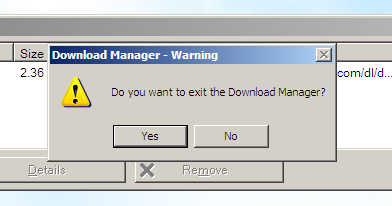
Here’s a great Microsoftism from today’s experience.
Trying to download the Windows 7 beta slides down the Information Bar (that dialog is my favorite Microsoftism in history) telling me that I needed to install the Download Manager. Sure, web browsers have supported downloading files without requiring plug-ins for well over a decade, but I’ll give them a pass on this.
After the file downloaded, it just sat there. Why do I need it after the file’s done? So I closed it and got this warning.
The OS X world encourages software to value people’s time, only interrupting them when absolutely necessary. Was it really necessary to confirm whether I wanted to close this when it’s no longer doing anything? What benefit would I gain by leaving it open? And if there is such a benefit that I’m not seeing, is that really so common that you’d want to prevent accidental closings with this dialog at the cost of making every user confirm this common action before doing what they asked?
https://marco.org/2009/07/07/first-impressions-of-windows-7-from-a-mac-user
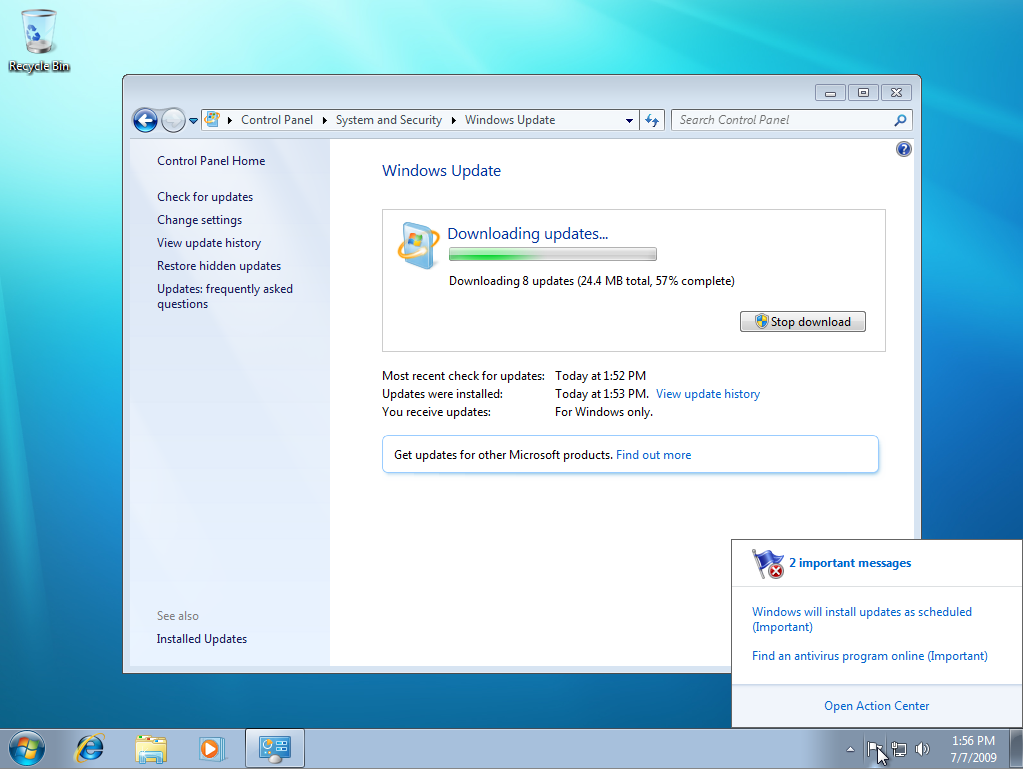
First impressions of Windows 7 from a Mac user:
https://marco.org/2009/07/07/i-need-to-very-occasionally-take-an-albuterol
I need to very occasionally take an Albuterol inhaler for light asthma. It’s so rare that I only need to get a new one every 2-4 years, so every time I run out, I need to get a brand new prescription, usually from a brand new doctor since I’m young and tend to move every few years. And it’s nice to have more than one on hand so I can keep them in different places.
Is there a legal, non-shady way to get 1-3 of these in the U.S. without having to find a brand new doctor in my new neighborhood, set up an appointment, take the morning off from work, fill out the new-patient paperwork, and waste both my time and the doctor’s with such a trivial matter?
https://marco.org/2009/07/08/not-to-put-a-damper-on-anyones-fun-but-doesnt
Not to put a damper on anyone’s fun, but doesn’t the Google Chrome OS sound a lot like this?
https://marco.org/2009/07/08/i-had-my-first-cup-of-coffee-from-the-semi-famous
I had my first cup of coffee from the semi-famous $11,000 Clover machine today. (Cafe Grumpy, Park Slope.)
I actually didn’t like it. The bean, a Yirgacheffe, had a bit too much of an earthy, almost dung-like flavor and scent that tasted slightly offensive and left a long-lasting, unpleasant aftertaste. Obviously, this could be improved by using a different bean or roast and isn’t the Clover’s fault.
But, ignoring the poor bean choice, I wasn’t incredibly impressed by the brew. It was certainly a lot better than the average Starbucks (or worse) drip brew, but I’ve had better coffee from roasters (which Cafe Grumpy is not, and I don’t know how old their beans were) brewed in standard commercial satellite drip pots.
The Clover seemed to extract more body from the beans than a French press, but less than a vacuum pot, with less flavor strength than a commercial drip brewer. The short brew time may be to blame: the entire brew cycle takes a bit over a minute, and I prefer press or vacuum coffee to be brewed for 2-4 minutes.
While it seems that the Clover offers decent quality with short brew times, which is convenient to keep customers’ orders moving quickly, it doesn’t seem worth the cost: a good roaster can make amazing coffee with a standard Bunn drip pot that takes far less labor, is easier to maintain and repair, and costs a lot less than $11,000.
https://marco.org/2009/07/08/now-you-never-have-to-leave-your-browser-and
Now you never have to leave your browser. And can’t. It’s exactly where Google wants you to be.
https://marco.org/2009/07/08/i-love-the-macbook-air-it-charges-so-quickly

I love the MacBook Air. It charges so quickly!
https://marco.org/2009/07/09/irc-challenged-me-to-graph-something-click-for
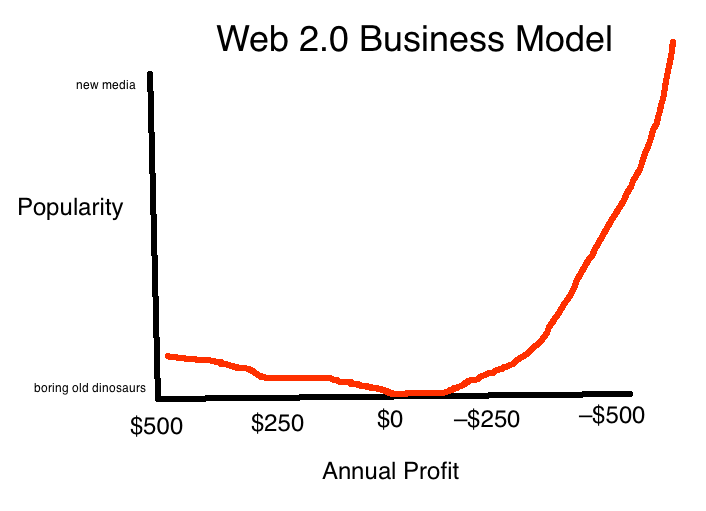
IRC challenged me to graph something. (click for full size)
Made with Paintbrush.
Much in the way that everybody who saw Sideways is now an expert on wine, the tragedy of blogging is that anybody with a laptop and a Gmail account is an expert on technology. So now that Chrome will actually be a full-fledged operating system, let’s see what the experts have to say.
A voice of reason with far too many excellent quotes for you not to read the article.
It was hard to pick just one quote from this.
What the fuck is going on inside Google? How much more out of control and undisciplined can this place get? How many new goddamn operating systems are they going to create? They’ve already got Android, and nobody wants it. Now they’re going to make yet another operating system, this time out of a browser that nobody wants. What’s next? A Gmail-based operating system? A YouTube-based operating system? Honestly, Google, is there anyone in charge over there?
This article said everything so well that I don’t feel the need to write my own long post about it.
It’s not that I think Chrome OS is a terrible idea — although it’s certainly not the best use of Google’s time and focus — but that it’s completely overrated and being massively misreported by the press as being a serious competitor or threat to Windows and OS X, which is about as accurate as saying that a RAZR is a serious competitor to a laptop.
https://marco.org/2009/07/09/oh-no-please-stop-launching-i-accidentally

Oh no, please stop launching, I accidentally double-clicked an .xls attachment but I really want it to open in Numbers, why won’t this force-quit, it’s still bouncing, damn it, this takes longer to launch than Photoshop, why do I even still have this installed, I never use it, at least not intentionally, what’s with that awful icon, it’s like they designed it to look terrible so people would use Windows instead, I can’t believe some people have to use this all the time.
https://marco.org/2009/07/10/this-is-how-ie8-is-described-to-windows
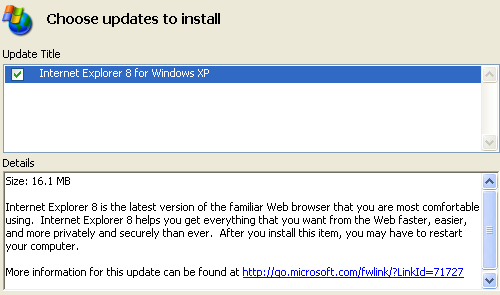
This is how IE8 is described to Windows users:
“Internet Explorer 8 is the latest version of the familiar Web browser that you are most comfortable using.”
That’s the best they can say against Firefox and Safari, I guess.
https://marco.org/2009/07/11/if-its-cool-or-interesting-you-wont-miss-it
If it’s cool or interesting, you won’t miss it. Even with fewer feeds.
— Brent Simmons argues for fewer feed subscriptions. And he writes a feed reader for a living. This should tell you something.
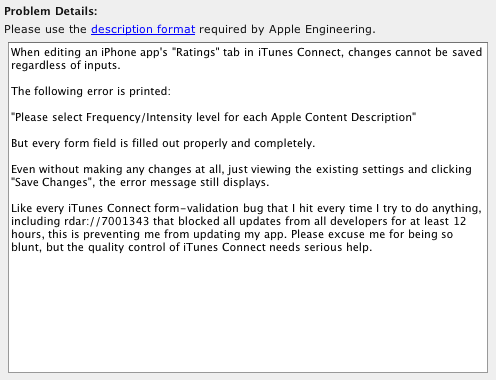
rdar://7052003
https://marco.org/2009/07/13/i-got-myself-a-15-instapaper-2-0-congratulatory
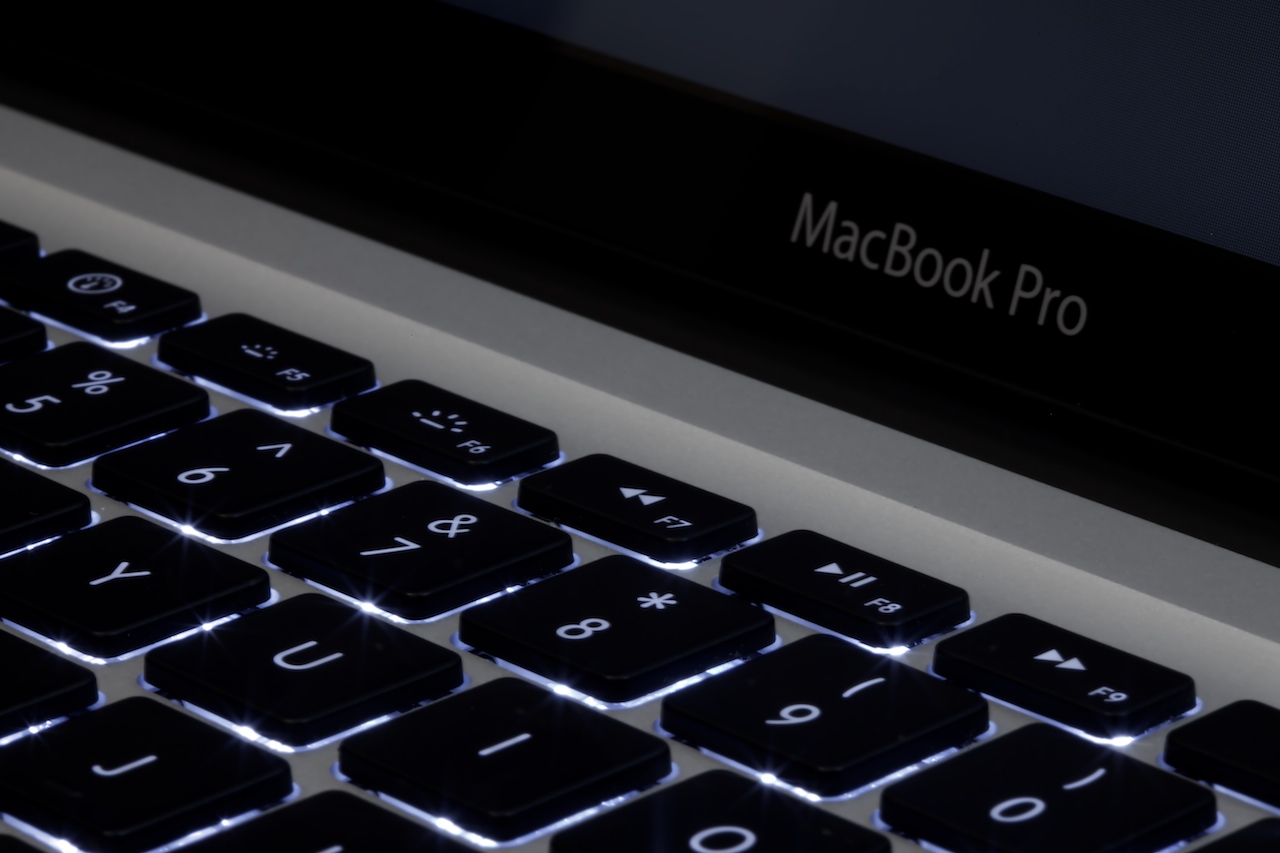
I got myself a 15” Instapaper 2.0 congratulatory launch present.
It’s actually only the second laptop I’ve ever purchased. (The first one was my first Mac, a PowerBook G4, in 2004. Since then, I’ve had two other laptops — a MacBook and MacBook Air, each its respective first generation — but both were purchased by Tumblr.)
I decided to switch back to the 15” line a while ago after feeling cramped by the 1280x800 resolution on the 13”/Air screens — I was just waiting for the right model to come out. I was disappointed that the most recent 15” refresh didn’t include the matte-screen option from the new 17”, but the price drop and improved battery life were compelling enough to finally make the switch.
Switching back to 15” was a tough decision because the 13” and Air really are significantly smaller and lighter, with the Air especially being a pleasure to carry and handle. It’s a great computer to carry with you in a bag everywhere, but I don’t carry a bag every day anymore, and when I do, it’s usually just for camera stuff. Now, with my short subway Brooklyn commute instead of the longer Metro-North Westchester commute, I use a laptop a lot less frequently.
But when I do use a laptop these days, usually when traveling, it’s very nice to have a decent screen resolution, an optical drive (I’ve wanted to burn CDs while traveling a lot more than I thought I would), multiple USB ports, Ethernet without a dongle, better battery life, and some horsepower (even viewing the 5D Mark II’s RAW files crushed the Air). The laptop’s weight is less relevant: for air travel or road trips, my backpack is usually loaded up with about 12-15 pounds of clothes and toiletries and gear, so an extra 2.5 pounds on the laptop really isn’t significant — but I sure notice when I need to do something away from home that the Air or a 13” screen can’t do comfortably (if at all).
So, after 3 years away, I’m back to the 15” form factor. No regrets so far.
https://marco.org/2009/07/14/also-from-phishs-hampton-show-from-the-spring
Also from Phish’s Hampton show from the spring, this is my favorite performance of Possum with a very energetic jam in the middle.
https://marco.org/2009/07/15/what-is-the-best-programming-language-for-web
Stack Overflow user sork in response to the linked question (via jonathan-deamer):
Gmail is written in Java.
Wikipedia is written in PHP.
Many parts of google.com are written in Python.
Slashdot is written in Perl.
Twitter is written in Ruby.
Stackoverflow is written in C#.
The list goes on…
As you can see, there is no best language, a language is only what you make of it.
Excellent response. You can tell a lot about a programmer’s wisdom and professional maturity by the way they answer these types of questions — and the more of a non-answer it is (like sork’s), the better.
Nothing is more dull and pointless than programmers arguing about which languages are “better” or berating languages they don’t know for being “bad”. Every language is great in many ways and awful in many others. If you can’t tell me why your favorite language sucks, you don’t know it well enough.
https://marco.org/2009/07/15/theres-a-pretty-significant-problem-in-the-new
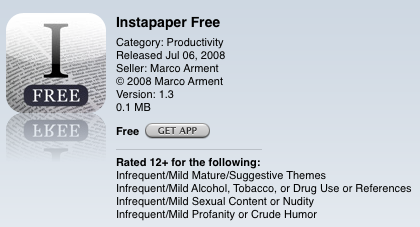
There’s a pretty significant problem in the new App Store ratings system. (Don’t worry, you can depend on me to blog about it!)
Instapaper Pro 2.1 was rejected because I had rated it like this — the current live rating for Instapaper Free — based on a comment that an Apple engineer made at WWDC. That wasn’t restrictive enough to get my Pro 2.1 update approved:
We’ve reviewed Instapaper Pro and determined that we cannot post this version of your iPhone application to the App Store at this time because it is not appropriately rated. Our review indicates that the application content is not consistent with the current rating. Instapaper Pro allows unfiltered access to the internet, where content with mature or suggestive themes can be accessed. Applications must be rated accordingly for the highest level of content that the user is able to access.
In other words, every app that allows users to see unfiltered internet content must be rated “17+”. I guess that’s somewhat reasonable.
But this is how the ratings form looks. It’s vague, and it’s not entirely clear to “unfiltered internet” app authors which of these may apply. If your app can display arbitrary images or videos, that could technically include nearly everything on the form except “Simulated Gambling”. The App Store reviewer cited only “Mature/Suggestive Themes”, but I should probably also include “Profanity or Crude Humor”, and I’m required by the policy to set them to “Frequent/Intense” (otherwise my submission, set to Infrequent/Mild, would have been accepted).
But the rating criteria I choose show up on the App Store pages like the photo above. That means, right under Instapaper Pro’s icon, it will need to say at least:
It’s misleading at best.
And that’s assuming that Apple ignores the possibility that someone could technically use Instapaper to save any web page of their choosing, including those containing violence, references to alcohol and drug use, horror/fear themes, and graphical sexual content. (Safari, of course, has the same range of potential offenses, with the addition of potential real and simulated gambling.)
These prominent notices make my app look pretty terrible in the App Store. I’ve already received emails from people asking why Instapaper Free is suddenly rated “12+”. How is it going to look when I need to update them both to “17+” citing frequent/intense mature themes and crude humor?
The solution to this is simple.
Add another ratings criteria to the form: “Unfiltered Internet Content”. Make it a simple true/false value instead of an intensity level. If set, the rating goes to “17+” and it displays only “Unfiltered Internet Content” below the app’s icon in the Store.
Not that I have any hopes that Apple would actually do that.
https://marco.org/2009/07/15/i-got-to-use-a-pre-for-a-while-and-my-overall
I got to use a Pre for a while, and my overall impression is that it’s… interesting.
It’s interesting because it’s one of only two platforms — the other being Android — that are even close to modern and advanced enough to compete with the iPhone. (By “modern”, I mean following modern standards for quality, usability, and features, not that they’re simply new. Windows Mobile or BlackBerry could be modern if they improved a lot of things that they’re, unfortunately, extremely unlikely to improve.)
And, having used a G1 and a Pre for about an equal (though very short) amount of time each, the Pre is clearly more advanced and I expect it to have a stronger ecosystem around it shortly.
But compared to an iPhone, I don’t think it holds up strongly yet, and I’m not sure if it ever will.
The Pre is very clearly a version-one release. There are a lot of rough edges — and not just the physical one that cuts cheese (although it is as sharp as Jason Chen says). The software has a lot of good concepts but a lot of missing or poorly implemented functionality. I also found a lot of it to be, simply, ugly.
Many actions are unintuitive and need the manual (or an expert) for explanation. This will be a problem with every touch device, actually, since many of our usual explanatory interface practices (labeled physical buttons, right-clicking, tooltips on hover) don’t work in this new environment.
Performance was also a major issue for me. A lot of animations were jerky, and a lot of actions needed a while to execute but didn’t give any sort of visual feedback that they were working or that I had initiated an action at all.
I also believe, like Gruber, that a physical keyboard without auto-correction is overrated — having been accustomed to the iPhone’s keyboard, I had a very hard time typing accurately on the Pre’s. I think mobile keyboards can be just as useful and you can be just as productive on them whether they’re virtual or physical, and it’s only about which one you’re accustomed to, and neither will ever be as good as a full-sized keyboard.
I was disappointed overall with the Pre. It’s not that it’s a bad phone, but Apple has raised the bar so much that it looks worse by comparison. It would have been a groundbreaking release in early 2007, but we have higher standards now.
I don’t think Apple has anything to worry about from this, and I’d even go as far as to say that my Verizon theory is much less likely now that I’ve actually seen how much of a threat the Pre isn’t.
https://marco.org/2009/07/16/these-two-remotes-by-apple-left-apple-tv-and
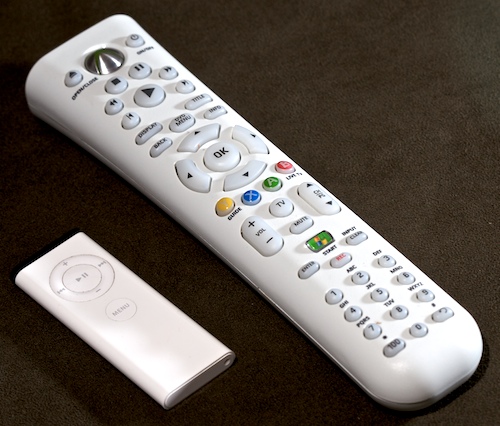
These two remotes, by Apple (left, Apple TV) and Microsoft (right, Xbox 360), do approximately the same things with a few exceptions:
This is a pretty good indicator of the two companies’ design philosophies and quality goals. And this isn’t even considering the software interface that each remote is respectively controlling.
https://marco.org/2009/07/17/no-promo-codes-for-apps-rated-17
Without promo codes, we’re prevented from easily giving free copies of our apps to reviewers — exactly the problem that we were given the promo codes to solve.
This is a big problem for apps that show internet content:
But, according to Apple, apps that feature an embedded web browser or provide access to 3rd party content also automatically require the 17+ rating, regardless of the application’s content or intended audience.
Assuming Apple applies their standards on what constitutes “unfiltered internet content” somewhat uniformly, this will affect, among others, any subsequent versions of:
Not to mention that we all still need to put those ridiculous notifications on our app pages stating that they contain frequent nudity and drug use and violence and mature themes.
I really hope Apple comes up with a solution to this “17+” mess very soon, because this is about to get completely ridiculous. We’re just seeing the tip of the iceberg because most apps haven’t updated since the new policy went into effect.
I also hope, despite a lot of evidence to the contrary, that Apple sees the App Store as more than just the One-Off Game Store.
Update: Thanks, Fake Steve Jobs! I’ve always wanted to be yelled at and berated by the real Steve Jobs, but this is probably as close as I’m going to get. On with the original post:
I’ve never doubted the viability of running a serious business of writing iPhone apps before. For the first time, now, I am.
App Review is problematic when the delays are longer than a few days. Since its inception, having submitted applications about 12 times, I’ve never seen a delay shorter than 6 days, with 7-8 being the most common duration. And now that rejections for very minor issues are common, nearly every app update gets rejected at least once and needs to wait in the queue again.
Almost no app updates were approved during the entire month of June with no explanation.
Apple refused to field a single question about the App Store at WWDC.
The new age-rating system is forcing nearly all internet-content-based apps to forego promo codes and tell buyers that they contain frequent nudity, intense profanity, and drug use.
iTunes Connect, the interface through which developers submit and manage apps, is extremely buggy and frequently mishandles important operations. On multiple occasions, it has posted screenshots and description text from an in-review update submission to the live app page, revealing upcoming features to competitors, blowing press exclusives, and causing my customers to email me angrily asking where the features are and accusing me of bait-and-switch.
Past iTunes Connect form-validation bugs have prevented me from updating my app’s information for days, even to reflect new features or pricing.
A current iTunes Connect form-validation bug (rdar://7052003) has prevented me from editing the rating for Instapaper Pro 2.1 to comply with the new “17+” requirement, and they won’t approve the update until I do. The bug has been open for 4 days so far with no resolution. I’m completely stuck, inexplicably, until they get around to fixing it.
Trying to communicate with Apple is like talking to a brick wall. The ADC phone reps can’t do anything, emails are rarely answered, and nearly every response that actually gets through just tells you to keep filing duplicate bug reports (that rarely get answered) until the problem goes away, which may never happen.
Sure, some issues get fixed. But they’re introducing problems more quickly than they’re fixing them.
I don’t think any of this is malicious (except the App Store question dodging at WWDC). I think it comes down to a simple flaw:
Apple thinks this is good enough.
And that’s the scariest part of all.
Apple thinks reviews can take 8-30 days and web-capable apps need nudity warnings and the management interface can be buggy and they don’t need us to be able to reach them and nobody really needs to take any of this very seriously.
Because it’s working for them. They’re making a killing taking their 30% commission on the 1.5 billion copies of $0.99 top-25 games that they’ve sold. Who cares if the App Store discourages good developers from putting serious effort into it? Apple doesn’t need to care. And it appears, for the higher-ups making the big decisions and resource allocations, that they don’t.
I don’t know if it’s possible to get past that.
I’ve written a big update and clarification to this.
https://marco.org/2009/07/17/photo-from-macworld-app-store-rating
(photo from Macworld: App Store rating system)
This is the dialog that will show for all “17+” unfiltered-internet apps.
What bothers me is the wording:
This product contains material that may be objectionable to children under 17.
When this displays for Instapaper Free and Pro 2.1, and every other unfiltered-internet app updated after last week, it’s incorrect. The product doesn’t “contain” objectionable material any more than Safari does. But they need to use the same message for us that Grand Theft Auto would get because they don’t have a rating category to distinguish us.
The only responsible solution is to make an “Unfiltered internet content” rating category, and display a separate version of this message if that’s the reason why it’s rated 17+, such as:
This product is capable of showing unfiltered internet content that may be objectionable to children under 17.
And use a similar notification on the App Store page for the app instead of “Frequent/Intense Mature/Suggestive Themes.”
I’d have absolutely no problem with that.
And it’s more useful to parents, too. Many parents don’t want their kids playing games that contain objectionable content, but they trust their kids to be able to responsibly use applications that could show such content but usually don’t, or don’t unless the kid tries to find such content themselves (like a web browser).
https://marco.org/2009/07/17/yuck-im-just-going-to-splurge-and-buy-a-bose
Yuck! I’m just going to splurge and buy a Bose iPod dock for my desk when I’m not broke.
— EmilyPosts’ unintentionally hilarious response to Pandora asking for a bit of money from heavy streaming users
https://marco.org/2009/07/19/i-went-outside-today-i-visited-red-hook-park

I went outside today. (!)
I visited Red Hook Park for the first time with my sister and brother-in-law to see the soccer match and eat from the amazing South American food trucks that I’m not qualified to describe.
For some reason, this is the only photo I took, probably because I only had my iPhone with me. It’s the worst-looking U.S. Post Office I’ve ever seen. But here are other people’s photos of what I ate and the giant Half-Life 2 building in the background and the Gowanus Canal that we crossed on the walk back to my apartment.
https://marco.org/2009/07/19/he-didnt-ask-a-lot-of-questions
ZOMG I’m so nervous about my first day of work tomorrow with a new company and I hope I don’t screw up and that I impress everybody and ZOMG what if they don’t like me and ZOMG what if I can’t do what they think I can do and ZOMG I don’t even know why they wanted me and ZOMG it’s a huge opportunity and ZOMG I really hope they’re not reading this.
Your first task is to find a place to put your desk in our small Manhattan office that’s already full, then assemble it using only your bare hands, a spoon, and a MetroCard. Then you need to pick up your Mac Pro and 30” monitor at the glass Apple Store and carry it back to our office without using any vehicles. Finally, you need to sign into FogBugz and resolve a small quantity of tickets (about 1400) that I haven’t been able to get to over the last few months, most of which will require live code changes. When doing that, don’t write any bugs, because you’ll break the site and cause hundreds of errors per second. Oh, and you should comment anything you see that’s not documented, which will be most of it. That should take you most of the morning. After a big pasta lunch every Monday, we have an all-team meeting that usually only lasts a few hours so we can create the action items and deliverables for the week and make sure we’ve accounted for all of our hours on the timesheets.
We start at 6 AM every day and we have a strict suit, jacket, and tie dress code. We just dressed down when you visited because we heard that’s how people dressed in Florida and we wanted to ease you into city life slowly. Oh, and we’re all members of the Church of Jesus Christ of Latter-Day Saints and therefore we do not allow coffee in the office.
Can’t wait to see you bright and early tomorrow morning!
https://marco.org/2009/07/19/digg-just-hijacked-your-twitter-links
Digg has apparently been a URL-shortener recently, but they’ve just angered a lot of people by changing the behavior of their shortened URLs to redirect visitors to a Digg page instead of the typical and expected link-shortener behavior of redirecting to the target page.
Shorteners are convenient, but they create a number of significant problems such as this.
Do you trust that shortener to be operational in a few years when you’re going back through your archives and looking for that one page that you blogged about? How about that article you short-linked from Twitter three weeks ago? Will your shortener still work? Will they still redirect for free, or will they force you through an interstitial ad page like Digg has effectively done here?
By depending solely on the whims, uptime, financial viability, and business decisions of a middleman, you’re dramatically reducing the durability and longevity of a link that you’re publishing.
And that’s just one of the many problems with link shorteners. They also have negative implications for your readers and search engines.
Use them only when necessary, only when links are unimportant and don’t need to be permanent, and only from shorteners that you trust to be in business and non-annoying for a while. Digg may be in business for a bit, but I’d never trust them not to be annoying. Personally, I go with Bit.ly when I need a shortener, but I minimize such occasions.
https://marco.org/2009/07/20/tough-noogies-you-whiny-bitch-go-write-for-the
Tough noogies, you whiny bitch. Go write for the Palm Pre, with their huge installed base. Or go do Android, and you can create a different version of your app for every different piece of hardware that Android runs on. Or hey, go do Windows Mobile. No, seriously. Let us know how that works out for you.
— Fake Steve Jobs tears me a new one.
This is such an honor. Now I know I’ve made it.
By the way, I have no intention of leaving iPhone development anytime soon, because I truly love it and it’s a huge and potentially very profitable market — I just wish that some of these App Store issues would get worked out.
A lot of people have understandably took my “Serious doubts” article to mean that nobody should develop for the iPhone or that Apple wants to kill us all or that I personally want to stop developing for the iPhone. None of these are true.
I don’t believe that Apple is being malicious, despite the many emails I’ve received over the last few days to that effect (“Apple has always hated developers!”). On the contrary, every Apple employee I’ve spoken to has been pleasant and truly seemed to have good intentions. The App Store problems seem to be caused by a strict culture and policies requiring secrecy by default, a lack of accurate capacity planning, and an aging and probably neglected internal management-software infrastructure. None of these are malicious or evil, but they can only be changed by large efforts internally, which take a lot of money and — more importantly — a lot of time.
Watching Apple manage the App Store is like watching Congress legislate for the internet: it’s very slow and the internal systems and assumptions are outdated, and while progress is being made, it seems impossible to keep up with the relevant issues at the rate they’re going.
Developing for the iPhone is great if you don’t have a strong financial need to be in the App Store. The troubles are annoying and frustrating, and can create severe inconsistencies in sales, release dates, update availability, and income. This is why I question the ability to run a serious business in the App Store: if you have deadlines and budgets and expenses and full-time employees (what I was considering a “serious business”), and you need tight control over release dates or PR or the content of your App Store page, this just isn’t a great environment at all.
For independent developers like me, it’s such a fulfilling development environment with potential money to be made — not enough to sustain most “serious businesses” unless you luck out with one of the top apps (and even that’s usually fleeting), but enough for an individual’s side income.
I’m going to continue developing for the iPhone for one key reason: I’m a developer, and I use an iPhone. I can’t and won’t make software for a platform I don’t use. I wrote Instapaper because I wanted it to exist, and I love being able to share it with the world with the App Store. If that ever becomes impossible or impractical, I’m going to keep writing it for myself anyway, and I’d probably write something else for the App Store.
I keep writing about this because I love Apple’s products, including this amazing little internet-connected computer that I always have in my pocket wherever I go, and there aren’t nearly as many flaws and shortcomings as most similar products. Developing for it is great — I can come up with nearly any idea that I want to exist, then make it happen, then always have it on my pocket computer. That’s amazing.
I want all of this to be great, including the App Store, because most of it already is. And, unfortunately, the only way to get a lot of changes made at Apple is to publicly blog about your complaints. I wish that weren’t the case, but it’s effective: if nobody complains about something, nothing happens, but if everybody complains about it, it gets fixed.
I don’t plan to leave iPhone development for the foreseeable future. But you’ll know if I do, because that’ll be the day I stop finding flaws and shortcomings in it. When most iPhone developers stop complaining about the App Store, Apple would truly have a problem: they’d know that we all left.
https://marco.org/2009/07/20/mysql-insert-on-duplicate-key-update
I had no idea this existed.
https://marco.org/2009/07/21/the-comments-on-other-sites-when-they-link-to
The comments on other sites when they link to things I’ve written should give you a pretty clear idea of why I don’t have comments enabled here.
There are so many times during the course of gameplay where you’ll wish an event or challenge were stretched into an entire game with a story, characters, or even online play. As it stands, you’ll play something, be amazed at the clever controls, be disappointed that the overall experience is so thin, and then come back and continue playing to show your friends or fight for a higher score.
Sounds a lot like Wii Sports. It’s a continuation of the same benefits and problems that nearly every good Wii game has exhibited: fun, casual, newbie-friendly play that’s fun to show your friends and family for a little while but that’s ultimately hindered by shallow gameplay, low replay value, and absence of a motivating single-player experience.
https://marco.org/2009/07/21/intels-new-34nm-ssds-cut-prices-by-60-percent-boost
The two new SSDs are X25M SATA parts weighing in at 80GB and 160GB, and they’re meant to replace Intel’s existing X25M drives in those capacities, but at 60 percent less cost and with better performance. The 80GB X25-M is $225 in lots of 1,000 (down from $595), and the 160GB is $440 (from $945).
This is a big deal for performance-hungry users, especially for decking out laptops.
However, the price cuts seem overstated — the now-previous-generation X25-Ms in 80 and 160 GB have been selling at near-retail in single-unit quantities for ~$315 and ~$630, respectively.
Hopefully this means that the new versions’ prices will soften soon. Hardly anyone who cares enough to buy these will be satisfied with 80 GB, so we can safely ignore the relevance of that one for the most part.
$440 for 160 GB is great news compared to the previous pricing, but we’ll really see large-scale adoption once we can get 160 GB for $200 and 320 GB for $400 — which, at the current rate, seems likely within 8-12 months.
https://marco.org/2009/07/22/codecomplete-code-complete-1-iphone
Code Complete #1: iPhone Development with Marco Arment
We discuss the world of iPhone development from how we both abuse UIWebView to the App Store.
If you’d like to hear two geeks discuss iPhone development for an hour, listen to this!
https://marco.org/2009/07/22/we-all-know-that-theres-no-fucking-way-in-the
We all know that there’s no fucking way in the world we should have microwave ovens and refrigerators and TV sets and everything else at the prices we’re paying for them. There’s no way we get all this stuff and everything is done fair and square and everyone gets treated right. No way. And don’t be confused — what we’re talking about here is our way of life. Our standard of living. You want to “fix things in China,” well, it’s gonna cost you. Because everything you own, it’s all done on the backs of millions of poor people whose lives are so awful you can’t even begin to imagine them, people who will do anything to get a life that is a tiny bit better than the shitty one they were born into, people who get exploited and treated like shit and, in the worst of all cases, pay with their lives.
— Fake Steve Jobs on cheap overseas manufacturing. (via John Gruber)
We plan to continue to run Zappos the way we have always run Zappos — continuing to do what we believe is best for our brand, our culture, and our business. From a practical point of view, it will be as if we are switching out our current shareholders and board of directors for a new one, even though the technical legal structure may be different.
Wow. This is a pretty big deal if you like buying shoes on the internet.
I love Zappos. I wear the same pair of shoes every day, and when they wear out, I just order the same ones again.
https://marco.org/2009/07/22/when-was-the-last-time-you-intentionally-hit-the

When was the last time you intentionally hit the Clear button on a form? You know, that button that looks nearly identical to “Submit” and is usually placed right next to it but performs the most destructive action possible?
HTML tutorials stopped including the Clear button about a decade ago with good reason.
https://marco.org/2009/07/23/irc-freenode-net-tumblrs-knows-me-so-well
https://marco.org/2009/07/23/ive-only-been-commuting-in-this-city-for-three
I’ve only been commuting in this city for three days and yet I already have a passionate hatred for tourists who use the sidewalk. Use cabs, use boats, use jet-packs… Just get the fuck out of my way. Harsh, maybe — but seriously: move.
— Topherchris is adjusting well.
https://marco.org/2009/07/23/apple-has-91-of-market-for-1-000-pcs
(via David Chartier)
According to NPD, in June, nine out of 10 dollars spent on computers costing $1,000 or more went to Apple. Mac revenue market share in the “premium” price segment was 91 percent, up from 88 percent in May.
This sounds impressive, but there’s a small problem: as far as I can tell, these numbers are for sales at retail. This rules out nearly every computer purchased by businesses, creative professionals, and gamers — all likely to have higher and more expensive requirements than the average home buyer — since such sales tend to be made through the manufacturers’ websites and direct sales representatives.
What this means, effectively, is that there are very few PCs sold for more than $1000 at Best Buy, Costco, and Wal-Mart, which isn’t really groundbreaking news.
https://marco.org/2009/07/24/tom-curley-the-a-p-s-president-and-chief
Tom Curley, The A.P.’s president and chief executive, said the company’s position was that even minimal use of a news article online required a licensing agreement with the news organization that produced it. In an interview, he specifically cited references that include a headline and a link to an article, a standard practice of search engines like Google, Bing and Yahoo, news aggregators and blogs.
— A.P. Cracks Down on Unpaid Use of Articles on Web.
So he wants it to be illegal for me to link to licensed AP stories from my site?
https://marco.org/2009/07/24/it-makes-me-wonder-what-people-a-hundred-years
It makes me wonder what people a hundred years from now will think of our popular fiction, our popular movies. What do we take for granted that they will find odd, and perhaps even distasteful? You can already see some obvious candidates in things that are still accepted, but barely, like smoking. How curious it is to see a movie in which everyone is puffing on a cigarette - for example, in Good Night and Good Luck, where Edward R. Murrow is shown delivering prime time television news with a cigarette between his fingers. What will people think of our enormous steak dinners and obese portions of food? That’s on the cusp of changing. What will they think of our profligate use of fossil fuels and other non-renewable resources? Our assumption that the American way of life will go on forever, just as it is, much as the British thought their empire would go on forever? What about our assumptions about unlimited technological progress? Will science fiction visions of star flight or “the Singularity” seem as quaint as “the White Man’s Burden”? Above all, what will they think of the appalling amount of waste in our culture? Have you ever walked through a tourist area - say Fisherman’s Wharf in San Francisco - and seen entire stores devoted to schlock, made in developing countries by people who must scratch their heads in wonder at a people so wealthy that they can afford to spend money on things that are so utterly and obviously useless?
— Tim O’Reilly (via azspot, peterwknox)
https://marco.org/2009/07/24/how-palm-re-enabled-itunes-sync
(via my favorite RSS filter)
One important aspect of this that most people are overlooking is that Apple probably needs to undertake reasonable efforts to prevent devices outside of their control from masquerading as Apple iPods to protect applicable trademarks, patents, and agreements they’ve made with content publishers.
They’re probably not just trying to block Palm out of resentment or jealousy.
https://marco.org/2009/07/24/i-cant-wait-to-consume-mash-up-and-share-the
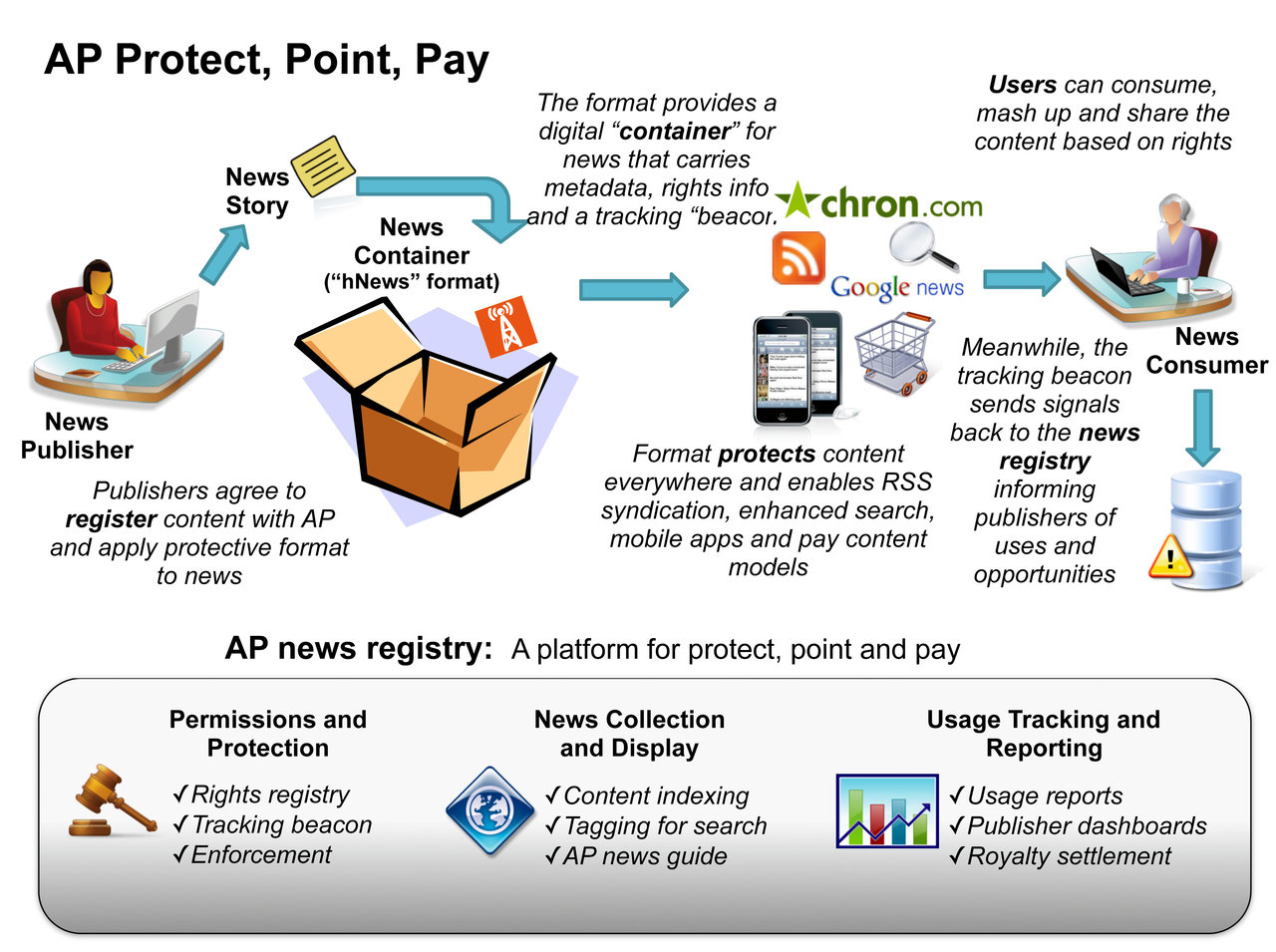
I can’t wait to “consume, mash up and share the content based on rights”! That sounds fun!
As Gruber points out, there are a number of technical impracticalities and impossibilities assumed in this plan. Most significantly, they can ask the music labels how effective DRM is when they assume that the “format protects content everywhere” while still enabling any semblance of RSS and search that anyone will actually use. They could require RSS readers and search engines to include special DRM-enforcing support to access their content, but given that the predominant player in both markets by far is Google, that seems unlikely.
This is all pretty funny, sure… but it’s also a bit sad.
https://marco.org/2009/07/26/so-let-me-get-this-straight-the-diocese-has
So, let me get this straight: the Diocese has enough money to make a hefty contribution to legislating morality but does not have enough money to put into education? Or how about feeding the poor? Or providing shelter for the homeless? As I remember from my years of attending and teaching Sunday School, the Bible talks far more about feeding the poor and clothing the homeless than it does about the gays.
— Far From It.: Disappointed, Not Surprised. (via 2arrs2ells)
The Catholic Church has many good people in both the clergy and the parishioners. But, like any other group of people of their size, it has always been rife with corruption, hypocrisy, politics, bickering, selfishness, and people just being assholes.
Actions like this do a lot more harm to the Church than whatever they think they’re trying to achieve, and those responsible should be ashamed of themselves and should really consider reading what Jesus of Nazareth actually said.
https://marco.org/2009/07/28/confirmed-17-apps-can-use-promo-codes-again
Instapaper Pro 2.1 was just approved, I was able to generate a promo code, and an internet friend was able to use it to install the app for the first time.
Curiously, it did not pop up any warning dialogs.
So I can confirm that this App Store problem has been fixed. To the best of my knowledge, revealing this information doesn’t violate any part of the NDAs or Terms. If I’m wrong, I’m sorry, and I’ll take it down.
https://marco.org/2009/07/29/i-got-a-gift-this-morning-the-gift-of-herpes-the

I got a gift this morning: the gift of herpes! The packing label gave it away: this was from #tumblrs.
Gift message:
Dear Marco, bengold was supposed to send you pie but he already spent all of his allowance and since you were probably expecting a gift I got you these herpes because bengold is a lot like a really annoying disease that won’t ever go away. Lulz, -Langer
It’s packed full of so many in-jokes that I won’t even bother trying to explain them. This was a surprisingly funny way to start my day.
(I know it’s not as funny to you, but how could I not post about receiving an unexpected gift of plush herpes in the mail based on in-jokes from an IRC channel?)
https://marco.org/2009/07/29/app-store-adds-search-keyword-fields-for-apps
This is great news. So I went to iTunes Connect to add mine. This should give you a rough idea of what it’s like to use iTunes Connect.
At the home screen, there’s now a notice at the top that contains this info (plus other redundant elaboration I’ve removed):
You must separate your keywords by commas when entering them on the application information page and are limited to 255 characters.
Cool. So let’s see, Manage Applications, Edit Information. Keywords field. Good. Let me click the little “?” icon next to it to make sure I have all of the information.
Oops, clicking on the Keywords “?” button pops up the help bubble all the way up there for “What’s New In This Version” instead, because they probably copy-and-pasted the entire field and forgot to reassign the proper IDs. This is very common — I’ve hardly ever had those “?” buttons toggle the field I was actually on.
Oh well. Let’s get through this. I typed in my keywords. Do I need to worry about phrases? Will “read,later” cover the case of a user typing “read later” or “read web pages later”? Is there any stemming? Do I need to type “read,reader,reading” or will all of those be covered by “read”? Should I include any misspellings of common English words? More information would have helped here, but oh well. Baby steps. Can’t complain.
I typed 141 characters worth of keywords and clicked the Save Changes button. I was then returned to the form with a validation error:
Well, that’s not what you said earlier, but hey, that’s OK. I’m used to this sort of thing with iTunes Connect. Let me just edit that field…
Oh wait, I can’t. Because, while it now contains my 141-character input, it’s disabled and uneditable. I guess I need to start over.
Since there’s no breadcrumb navigation anywhere in iTunes Connect, the best you can do to return to the home screen is retype the home URL or click on a lot of Cancel buttons (which only behave as “back-navigation” and don’t actually cancel any of the changes you’ve saved so far). So I clicked “Cancel” to return to the app management screen.
Cannot Process Request
An error has occurred processing your request. Please try again later or send an e-mail to itunesconnect@apple.com for assistance.
This is what it’s like using iTunes Connect.
But I’m glad they added keywords. At least, now, we won’t see the raw evidence of apps spamming their descriptions with the names of their competitors and unrelated top-25 apps to turn up in more searches.
https://marco.org/2009/07/29/wireless-carriers-are-cartels-or-outright
Wireless carriers are cartels or outright monopolies almost everywhere around the globe. The Internet is a historical anomaly and the way technology has propagated on it is one of the luckiest things to happen in modern technology.
— Chris Muscarella on Why Japan’s Smartphones Haven’t Gone Global
Katie Schenk needs light-bulb help:
I replaced two light bulbs on Sunday night and both are already out. Yes, I bought the cheap kind but I really expected them to last a little bit longer than three days. And of course I have no extras because I am never domestically prepared for anything.
So, I ask you all - Which light bulbs should I be buying? (Marco, I’m looking at you on this one. It’s your moment to ‘shine’ so to speak.)
The first decision: whether to buy compact fluorescents (CFLs) or regular incandescent bulbs. Both have their advantages:
Buy CFLs if they’ll fit the fixture, aren’t connected to a dimmer, and won’t be directly visible most of the time. Buy incandescents if any of these conditions don’t apply.
Color temperature is important. If in doubt, buy “warm white” 2700K, since that’s probably what you’re used to. “Daylight/full-spectrum” 4100K/5000K/5500K bulbs will look significantly more white, and slightly blue by comparison, compared to average indoor lighting. To most people, this look is more harsh and sterile. Tiff hates it and compares it to being in a hospital. I suggest, if you’re going to try whiter bulbs than the typical 2700K “warm white”, that you start with one or two 4100K bulbs in select fixtures and work your way up to 5000K if you like the look. I’d never suggest a 5500K bulb — I’ve never seen one that didn’t look completely ridiculous.
They seem like great-quality bulbs so far. If you get weird grocery-store or IKEA CFLs, they’re usually very cheap and bad and will shift to a pinkish tint after 6-12 months. The higher-quality bulbs from good internet vendors don’t seem to do this, or at least won’t do it for a much longer time. I just bought a bunch of CFLs from here with no problems yet, although it’s too early to tell how good they are long-term.
If you end up getting incandescents, of course, you can get them pretty much anywhere and they’re about the same.
https://marco.org/2009/07/31/some-critics-attack-single-payer-arguing-that
Some critics attack single-payer, arguing that under such a program, government bureaucrats will be between the patient and the physician. In the 40 years I have been practicing under Medicare, I have never encountered an instance where Medicare has prevented proper medical care. On the other hand, insurance companies frequently interfere and block appropriate care.
— Obama’s Doctor Speaks Out for Single-Payer Healthcare Reform (via azspot)
https://marco.org/2009/07/31/we-dont-believe-in-coming-to-market-like-apple
We don’t believe in coming to market like Apple — high margin, high quality, high price. We believe in high volume and low price.
— Steve Ballmer (via the entire internet today)
https://marco.org/2009/07/31/fcc-questions-apple-over-google-voice
In a letter sent Friday to Apple, the agency asked the company why Google Voice was rejected, which related applications have been rejected along with it, and what role AT&T may have played in the decision.